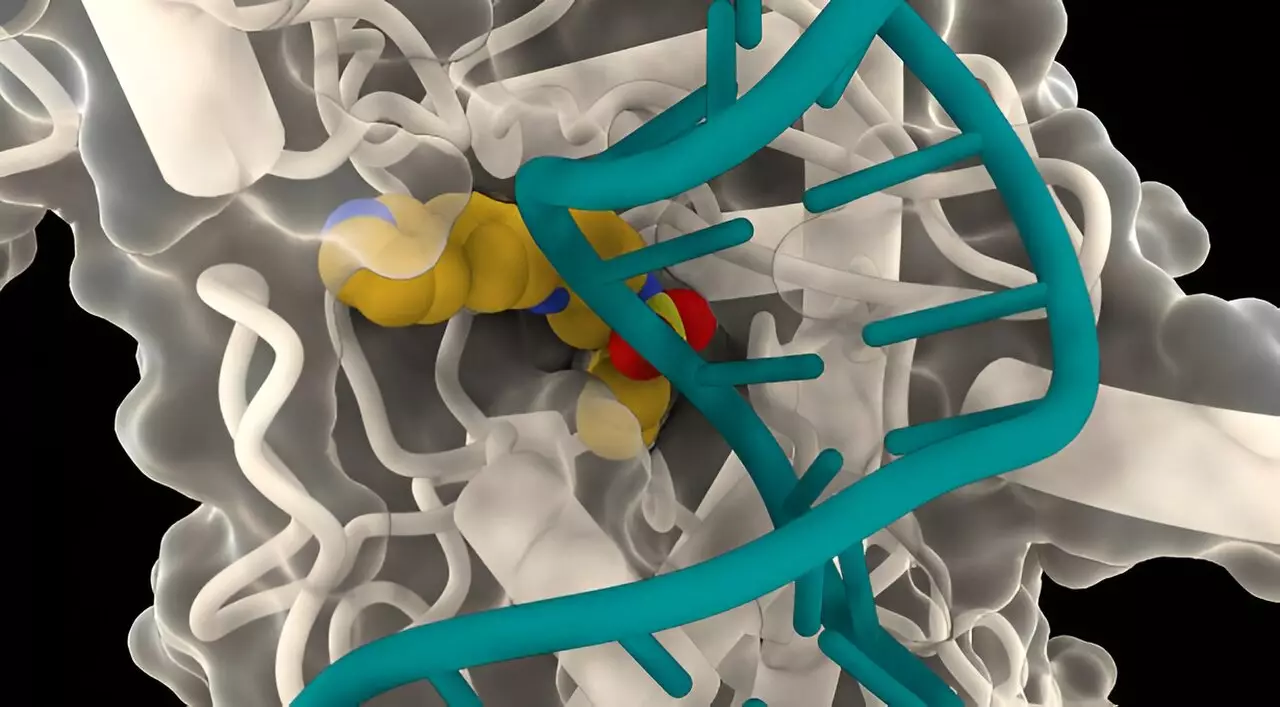In a collaborative research project between the University of Leiden and the John Innes Centre, a unique approach to developing antibiotics has yielded a highly promising candidate for combating drug-resistant bacteria. The project involved screening a library of 352 small molecules, some of which are currently used in cancer therapies, to test their antimicrobial properties against harmful bacteria like Escherichia coli.
Out of the 12 compounds that showed inhibitory effects on bacterial growth, one particularly potent compound called LEI-800, a member of the isoquinoline sulfinamides class, was further optimized for its antimicrobial activity. Researchers found that this compound was effective against E. coli and K. pneumoniae, two gram-negative bacteria commonly associated with hospital-acquired infections. The study also revealed that the target of these compounds was the bacterial enzyme DNA gyrase, crucial for bacterial growth and reproduction. By binding to the gyrase and preventing it from cutting DNA, LEI-800 exhibited a unique mechanism of action.
The development of effective antibiotics to combat drug-resistant bacteria is a pressing global health concern. The identification of a novel class of molecules targeting gram-negative bacteria, which have developed resistance to existing drugs, offers a promising solution to this problem. According to Dr. Dmitry Ghilarov from the John Innes Centre, the discovery of LEI-800 through repurposing existing compounds highlights the potential of this approach in drug development. The unique binding pocket of the compound suggests that it could be used in combination with existing antibiotics for enhanced efficacy.
Dr. Ghilarov emphasizes the importance of repurposing existing drugs in finding new treatments for complex diseases. The discovery of a topoisomerase inhibitor from a library designed to target human kinases underscores the vast potential for drug discovery using this approach. The study highlights the complexity of biological systems and the possibility of identifying new therapeutic targets through innovative methods. Moving forward, further optimization of LEI-800 and progression towards clinical trials and commercialization are crucial steps in the development of this novel antibiotic.
The breakthrough in antibiotic development presented in this study opens up new possibilities for combating drug-resistant bacteria and addressing the global health crisis of antibiotic resistance. By repurposing existing compounds and uncovering their potential as antimicrobial agents, researchers have demonstrated a novel approach to drug discovery that has the potential to revolutionize the field. The discovery of LEI-800 and its unique mechanism of action against gram-negative bacteria offers hope for the development of effective treatments against resistant strains. With further research and development, this innovative approach could lead to the discovery of new antibiotics and help in the fight against antibiotic-resistant infections.


Leave a Reply